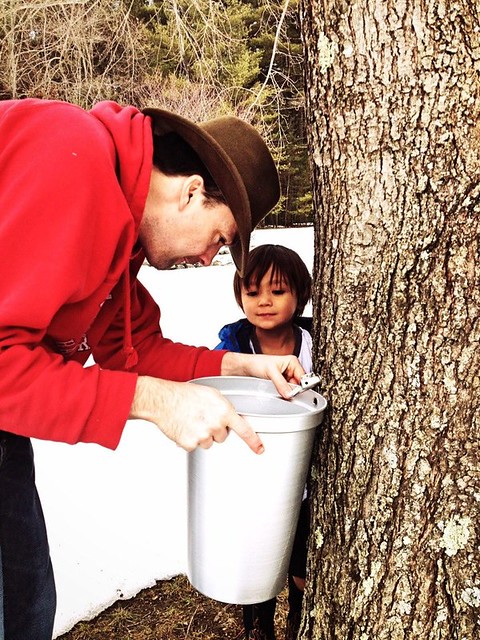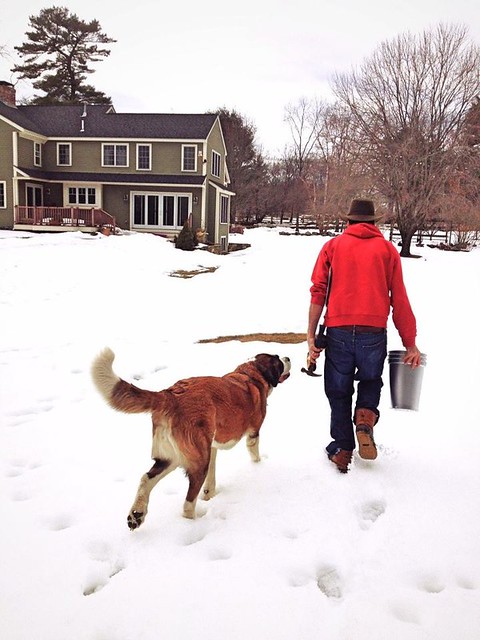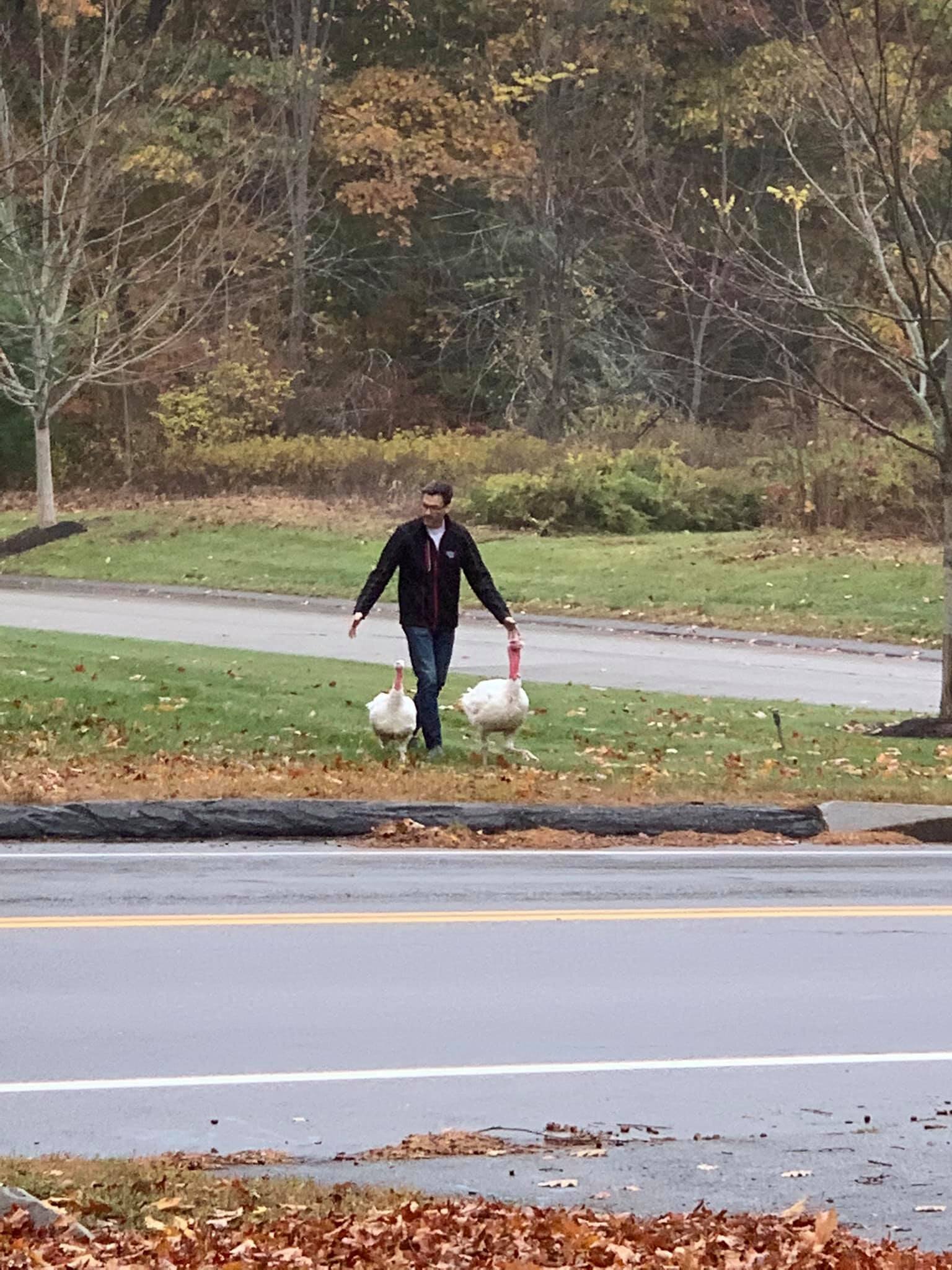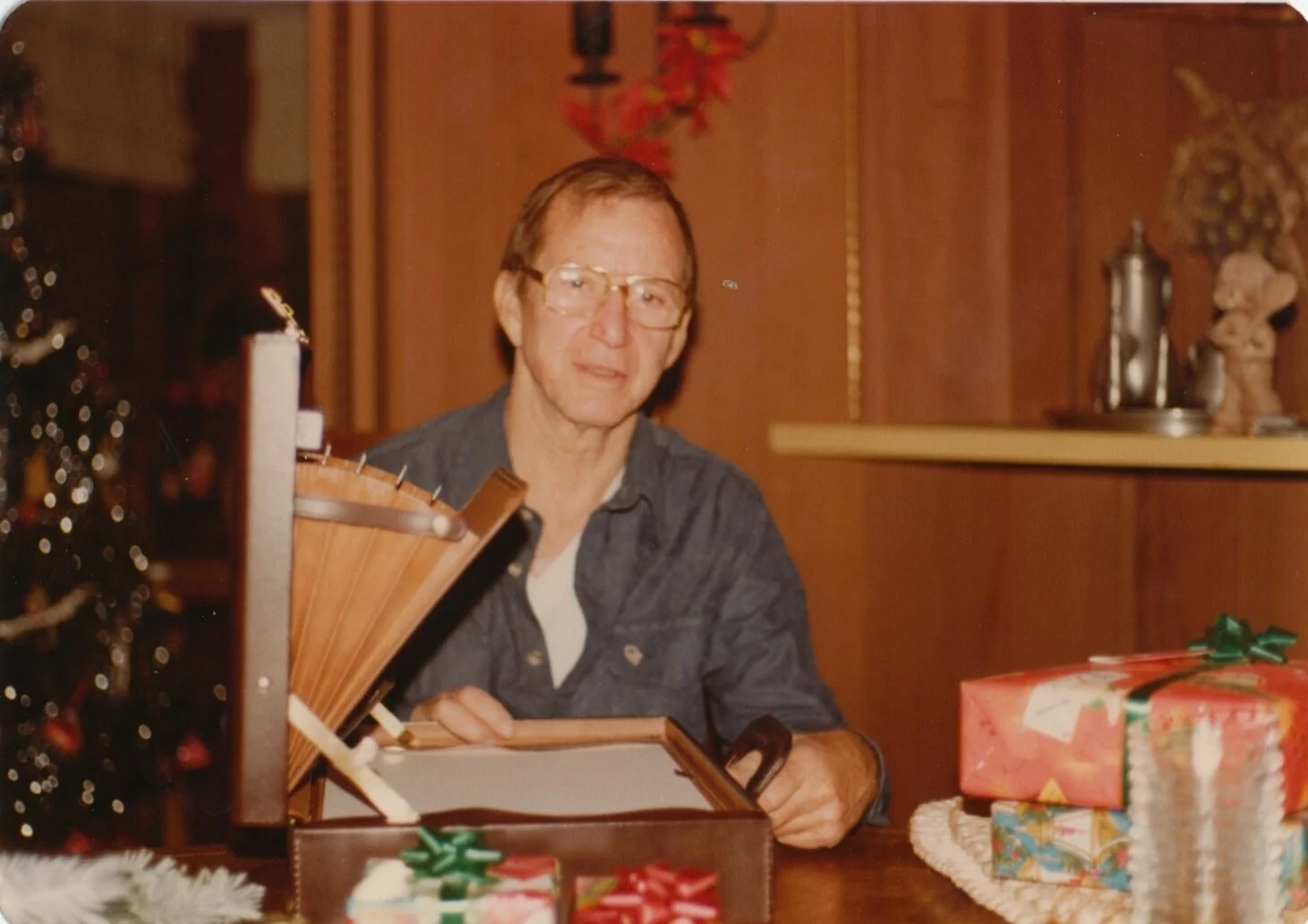Sweet, brown, liquid gold
/So after putting out the taps, we watched the buckets closely. The first couple of days, the temperature went back down to the upper 30's - not really enough to get the sap flowing very quickly. And then we had more than 16" of snow fall.
In the first 5 days, we collected only a few gallons of sap.
But then the sun came out. It soared into the mid 40's, and the sap was flowing. Suddenly, I wasn't checking often enough, and we had 17 gallons of sap in two days. I collected it in food-safe plastic buckets (using clean, empty ail-pails from my cider brewing), nestling it in the leftover snow out on the porch until we were ready to start. The sap can sit out in the cold for several days quite safely, as long as it stays nicely chilled.
I was ecstatic, and excited to begin the next step. But then I realized we had a different sort of problem. What the hell do you boil seventeen pounds of anything in?
When I got the idea to start tapping our trees, I sent out a quick email to some other guys in town that I knew would be into it, or had done it before. I didn't know what the heck I was doing. I'm from Georgia. You want to talk BBQ? I'm your man. Making some edible sweetness from the lumber growing in your yard? That sounds like some sort of mystical Pilgrim voo doo.
One of my Yankee neighbor buddies reassured me.
"Collect sap. Boil it. It's hard to screw it up"

I pulled out every large canning pot we had in the house. We had three burners going, and steam started to rise, as the watery sap hit a slow boil. Soon I had a wet spot collecting on the ceiling above the stove, and the house began to feel like a sauna. A sweet, maple scented sauna.
I set up a fan to blow the steam a little better, and get air flowing through the house. Fortunately, we have a large open kitchen area. I don't think I'd do this first part inside again - there are reasons that people did this outside over an open flame.
It took hours, and we kept consolidating. And collecting. That day was warm again, and we ended up with another 5 gallons by the end of the day, bringing us up to 22 gallons total.
It takes about 40 gallons of sap to create 1 gallon of syrup - so I was looking at a little more than 8 cups of syrup potential.
Once we got it down to a couple of gallons of condensed liquid - it was getting more viscous, browning, and definitely sweet and smelling like it was heading where it needed to go.
The last step is to bring the liquid up to someplace north of 210 degrees - the point where it starts to thicken, and get that syrup texture that you're shooting for. A candy thermometer is your friend.
A final filter of the syrup into your clean jars, and this can be put in the freezer for weeks or longer.
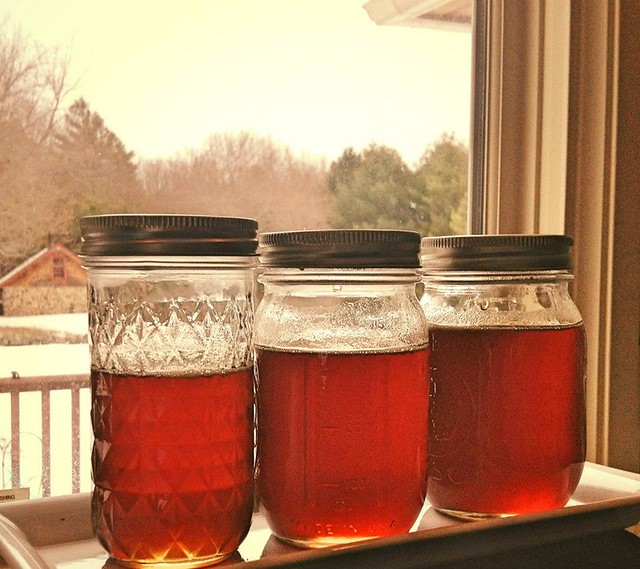
The taste of this fresh, home-collected syrup is amazing. It reminds me of sorghum in a way - richer, earthier, more complex than the syrup bought from the store. We gave each of the kids a little spoonful, and started planning the pancake breakfasts and french toast and other treats, while at the same time scheming to figure out how we make it last. Collecting and boilng that much sap to get a few precious jars of syrup. This is drizzling syrup, not pouring syrup.
Even so, while it took a full day to boil down, I don't think it would really take much more work to do 2 or 3 times the amount of sap, especially with a couple of people to share the watching with.
This was a bucket-list item for me. But I think this will be a new annual tradition for our family, weather permitting.
But don't expect me to share any.
You go find your own trees.

